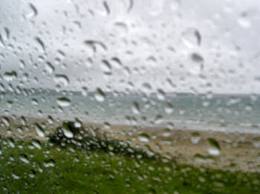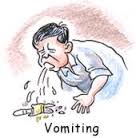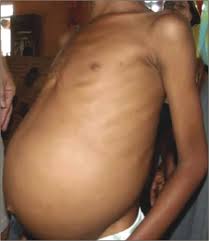
“There is no single disease which causes more psychic trauma, more maladjustment between parents and children, more general insecurity and feelings of inferiority and greater sums of psychic suffering than does acne vulgaris.” —Sulzberger & Zaldems, 1948.
Introduction:
Acne is a skin disorder due to the action of hormones and other substances on the skin’s oil glands (sebaceous glands) and hair follicles. These factors lead to plugged pores and outbreaks of lesions commonly called pimples or zits. Pimples or acne may usually occur on the face, neck, back, chest, and shoulders. Severe acne can lead to permanent scarring.
Causes of acne:
· The exact cause of acne is unknown.
· One important factor is an increase in hormones called androgens (male sex hormones). These increase in both boys and girls during puberty and cause the sebaceous glands to enlarge and make more sebum.
· Another factor is heredity or genetics.
· Certain drugs, including androgens and lithium, are known to cause acne.
· Greasy cosmetics may alter the cells of the follicles and make them stick together, producing a plug.
Common myths about acne:
· Washing the face more often will help clear up acne
· Stress causes acne
· Masturbation or sex causes acne
· The sun bathing gets rid of acne
· Diet and acne are related. Chocolates and fat foods do not cause acne
Allopathic treatment of Acne:
Ointments containing Benzoyl peroxide, Resorcinol, Salicylic acid and Sulfur are commonly used. When the acne is uncontrolled doctors use antibiotics to help stop or slow the growth of bacteria and reduce inflammation. Surgical measures for deep-pitted scars include derma-abrasion conventionally, with lasers or chemical peels.
Procedural Acne Treatment Options
Procedural treatments are therapies performed by a dermatologist, health care practitioner, or esthetician. They are used in the treatment of mild to severe acne, depending on the treatment. Procedural therapies are meant to be supportive and used in conjunction with topical and/or systemic treatments.
- Comedo removal – Often performed by estheticians during a facial, comedo extractions involve gently coaxing plugs of sebum and cellular debris from the pore. By removing blackheads, milia, and soft closed comedones the overall number of breakouts can be reduced.
- Chemical peels – These agents deeply exfoliate the skin using an alpha-hydroxy, beta-hydroxy, or glycolic acid. Light chemical peels improve acne by removing dead skin cells and helping to clear pores of debris. Estheticians may incorporate chemical peels into a facial for those with mild to moderate acne. Those with more serious acne should have their dermatologist perform the chemical peel.
- Microdermabrasions – This treatment may be performed at a skin spa or your dermatologist’s office. It is not painful. A microdermabrasion treatment deeply exfoliates the skin, loosening debris from within the pore. It is best for those who have non-inflamed acne, with many blackheads and/or whiteheads.
- Lasers – Phototherapy is the term used to describe any treatment utilizing laser or light. They work by killing P.acnes, reducing inflammation, or shrinking the sebaceous glands, depending on what therapy is used.
- Steroid injections – Dermatologists can inject a cyst with corticosteroid, reducing inflammation and the chance of scarring. Corticosteroid injections speed healing of the lesion to just a few short days.
Naturopathic treatment in acne:
- Fastingcan be an effective method of treating acne but should not be undertaken for more than 2 to 3 days without a physician’s supervision.
· Drinking plenty of water
· Alternate hot and cold compresses with to the affected area.
- Indian Naturopaths advise applying a special mudpack on the face. The mudpack is called as ‘MULTANI MITTI’ and it is applied as a face pack.
- Wheat grass therapy
- Colon cleansing. .
Herbs for acne:
Several herbs are useful. Tea tree oil (Melaleuca alternafolia) has been found useful as an antibacterial and anti-inflammatory properties and improves acne
Guggul (Commiphora mukul) has been found to be as useful as tetracycline. However, it cannot be given to pregnant or lactating women. It is believed that Guggul has estrogen like effects and should not be given in any patient who has a family history of hormone related cancers in near relatives. The drug has interactions with birth control pills and anticoagulants.
Topical medications include topical use of Aloe barbadensis, Azardirachta indica, turmeric (Curcuma longa), Hemidesmus indicus, Terminalia chebula, Terminalia Arjuna, and ashwagandha (Withania somnifera) and these were found useful in reducing acne lesions.
Homeopathy
Homeopathic remedies are very useful in acne. However, the homeopath has to take a detailed history and ideally give a constitutional remedy to effect a cure. There are however, effective and specific homeopathic remedies.
Some of the common remedies that are useful are:
- Belladonna — for people who experience flushes of heat to the face or who have inflamed pustular acne that improves with cold applications
- Berberis Aquefolium is useful in dry, rough scaly acne where the eruptions are found on the face and neck.
- Calendula— for skin conditions involving pustules or blisters
- Hepar sulphur — for painful, pus-filled acne
- Kali bromatum — for deep acne, especially on the forehead, in persons who are chilled and nervous
- Silicea— for pustules or pit-forming acne.
In recent times, there are number of topical preparations containing Calendula, Berberis Aquefolium Q and Thuja, which are surprisingly quite effective in tropical conditions.
Conclusion:
Acne causes a host of psychosomatic problems in adolescents such as social withdrawal, low self esteem, reduced self-confidence, poor body image, embarrassment, depression, anger and frustration.
Fortunately we are living in an era when there are many treatment options and alternatives.
References
· Adebamowo CA, Spiegelman D et al. High school dietary dairy intake and teenage acne. J Am Acad Dermatol. 2005 Feb; 52(2): 207-14.
· Bassett IB, Pannowitz DL et al. A comparative study of tea-tree oil versus benzoyl peroxide in the treatment of acne. Med J Austral 1990; 153:455–58.
· Carmina E, Lobo RA. A comparison of the relative efficacy of antiandrogens for the treatment of acne in hyper androgenic women. Clin Endocrinol (Oxf). 2002 Aug; 57(2): 231-34.
· Cordain L, Lindeberg S et al. Acne vulgaris: a disease of Western civilization. Arch Dermatol. 2002 Dec; 138(12): 1584-90.
· Elman M, Lask G. The role of pulsed light and heat energy (LHE) in acne clearance. J Cosmet Laser Ther 2004 Jun; 6(2): 91-95.
· Layton A M. Optimal management of acne to prevent scarring and psychological sequelae. Am J Clin Dermatol. 2001;2(3):135-41.
· · Raman A, Weir U et al. Antimicrobial effects of tea-tree oil and its major components on Staphylococcus aureus, Staph. epidermidis and Propionibacterium acnes. Lett Appl Microbiol 1995 Oct; 21(4): 242-45.














